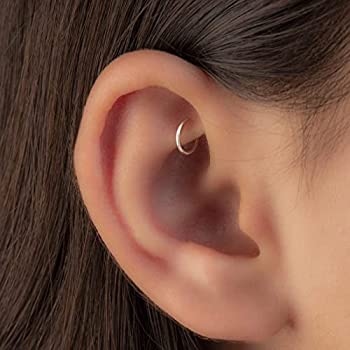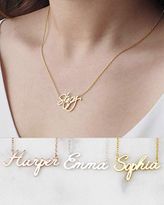
Mele is a generic term that describes songs, poems, chants, and other elements of Hawaiian culture. It is commonly found in the title and lyrics of Hawaiian songbooks. Here are some examples. Each item has its own meaning. These items are a wonderful and easy way to add color to your mel.
a chant
A chant of mele is a song/poem that describes a specific event or place. It can be sung one way or written in many ways. A mele, in Hawaiian culture, is a song to commemorate a person or a location. Some mele are composed for a particular person, while others are composed for a procession.
Melee songs are often sung in regattas, long distance canoe races, and at NCOCA meetings. Traditionally, the chant is sung once in the first verse, followed by the hui twice, and the closing tag.

a song
A song is music composed for the human voice. It is often performed at different pitches and sometimes uses patterns and sounds. A song can be in many different formats and contain sections of different durations. A song is a wonderful way to express yourself and your feelings.
Mele refers to a Hawaiian song, chant, or chant. The song can be sung or composed by another person. Mele is a traditional method to honor someone or a place. It is an expression Hawaiian identity. Mele is sung by the performer in their native language.
a poem
The process of creating poetry is called haku mele or weaving the text. It involves the careful selection of words and phrases, and is a skill of Hawaiian poets. Hawaiian poetry is rich in metaphor. Good poets can create deep meaning poems by combining images of people or places. Hawaiian love songs use techniques such as calling someone a bloom or invoking the image water.
Mele poems can be either short or long. In each dance, the poet will reveal his or her personal interpretation of the poem. It will reveal the poet's intentions and the meaning of the poem. A poem about mele is one example of a poetic piece that expresses cultural identity's complexity.

Recitation
A recitation of mele is a ceremonial song of Hawaiian origin. Mele are sung only by Hawaiian-born people. They were first recited in Hawaii by Kamehameha the first King of Hawaii. They were used in the early years when the Kingdom was founded. The invitational mele ma'i song is similar. The first part of a mele is dedicated to a search, while the second section contains an invitation.
The recitation of mele is often performed by the poo-pua'a, the chieftain of the olapa. The poo-pua'a begins the recitation with a conversational tone, less stern or punctilious than the other mele ma'i.
FAQ
Do I have the means to afford new clothes
Yes, you can afford to buy new clothes. It is important to remember that clothes don't necessarily have to cost thousands of dollars. Shop at Dollar General Discounts to Save Money
How is a trend different from a fad?
Trends are an idea that is in demand. It's more than a passing fad. It becomes a way to live that becomes part our culture. Trends will not fade away. They become a permanent fixture in our lives.
A fad lasts only a short time. It fades quickly. It doesn't last long enough to make any real impact on our lives.
Should I wear make-up?
Yes! Makeup makes you feel beautiful. Makeup should be applied every time you leave the house.
Makeup can make you look younger and more beautiful. It can make you look more youthful and healthier. It increases your confidence.
What's the difference in high-end and cheap clothing?
Cheap clothing is usually low-quality and limited in features. Although high-end clothing tends to be more expensive, it offers many additional features.
Celebrities and models are more likely to choose high-end brands. These kinds of clothes are often featured on runway shows and red carpet events.
Statistics
- Finally, Express carries petite sizes, which, according to the retailer, are meant for women 5'4″ and under. (collegefashion.net)
- Nano influencers have less than 10K followers and have the highest engagement rate with 4%. (thetechfashionista.com)
- STUDENTS GET 10% OFF GET YOUR CODE (asos.com)
- Also, they are known for offering up to 50% off quite often – always wait for the sales with Express! (collegefashion.net)
- Another ethical fashion company, [43] Consumption as a share of gross domestic product in China has fallen for six decades, from 76 percent in 1952 to 28 percent in 2011. (en.wikipedia.org)
External Links
How To
How to Select the Best Shoes
Here are some tips to help you choose the right shoes. The first thing is to choose the right shoe size. For your first pair, you will need to know your size. Make sure they fit correctly. They will likely not last as long if they make you uncomfortable.
The type of shoe you choose to wear is another important consideration. What style of shoes do you prefer? Are they casual shoes, formal shoes, sport shoes, or work shoes. Do you want shoes that can be worn for different occasions? For example, formal shoes will be worn at weddings or parties while sneakers will be worn during sports activities. It all depends on what you like and how you live.
The material type is the third factor. While leather shoes are timeless and durable, they can be expensive. While leather is more durable than synthetic material, such materials as canvas, rubber, and mesh are generally cheaper than leather. Although plastic may seem cheap, it does not mean they are less durable. There are many different types of synthetic materials such as suede, nubuck or microfiber. They are easy to maintain and affordable.
You should also consider how much you are willing to spend on shoes. Although high-quality shoes do cost more than cheaper ones, there is not much difference in prices between brands. It's okay to purchase expensive shoes, as you'll get more value for your money.